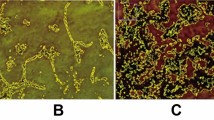Abstract
The action of PRP is characterized by the pronounced activation of the background activity (BA) of the brain spinal cord, and the degree of the activity depends on BA initial level. The typical peculiarity of Vipera raddei venom influence is the initial increase in frequency of BA with subsequent depression. A preliminary injection of PRP has a protective effect at subsequent influence of venom. In animals with hemisection the PRP increases the decreased activity of neurons on injury side. Taking into consideration the protective peculiarities of PRP in the relationship to snake venom and the possibility of the latter to stabilize and prolong the action of drugs (in the case of PRP) combined with them, it is supposed that the mentioned use of the combination in clinical practice will be perspective. The data obtained testify the PRP to be a neuroprotector against many toxic compounds formed in organism (glutamate, ceramid, beta-amyloid neurotoxisity, etc.). Investigations in this aspect are still in the process.
Similar content being viewed by others
REFERENCES
Scharrer, E., and Scharrer, B. 1954. Hormones produced by neurosecretory cells. Res. Progr. In Hormone Res. 10:183.
Du Vigneaud, V., Ressler, C., and Tripett, S. The sequence of amino acids in oxytocin, with a proposal for the structure of oxytocin. J. Biol. Chem. 205:949-959.
Galoyan, A. A. 1965. Some problems of hypothalamic regulation. Hayastan Publishers. Yerevan. 242p.
Galoyan, A. A., and Sahakian, F. M. 1971. Isolation of coronary dilatory hormones from neurosecretory granules of neurohypophysis. DAN SSSR. 201:483-485.
Markossian, K. A., Gurvits, B. Ya., and Galoyan, A. A. 1999. Isolation and identification of novel peptides from secretory granules of neurohypophysis. Neurochemistry (RAS and NAS RA), 16:22-25.
Galoyan, A. A., Aprikian, V. S., Markossian, K. A., Gurvits, B. Ya. 1998. Neurosecretion of cytokines by magnocellular cells of hypothalamus. Neurochemistry (Russia). 15:1-15.
Swanson, L. W. and Kuypers, H. G. J. M. 1980. The paraventricular nucleus of the hypothalamus: cytoarchitectonic subdivision and organization of projections to the pituitary, dorsal vagal complex, and spinal cord as demonstrated by retrograde fluorescence double-labeling methods. J. Comp. Neurol. 194:555-570.
Galoyan, A. A., et al. 1996. New polypeptides of hypothalamus: isolation and primary structure. Proc. NAS RA. 96: No. 2-4, 117-119.
Galoyan, A. A. 1997. Biochemistry of Novel Cardioactive Hormones and Immunomodulators of the Functional System Neurosecretory Hypothalamus-Endocrine Heart. Nauka Publishers, Moscow.
Karlsson, E. 1979. Snake venoms, Chemistry of Protein Toxins in Snake Venoms pages 159-212, in Chen-Yuan, (ed). Springer-Verlag, Berlin-Heidelberg-New York.
Slotta, K. 1955. Chemistry and biochemistry of snake venoms. Prog. Chem. Org. Nat. Prod. 12:406-465.
Kaiser, E., and Michel, H. 1958. Die Biochemie der tierischen Gifte, Franz. Deuticke, Wien.
Suzuki, T., and Iwanaga, S. 1970. Bradykinin, Kallidin, and Kallikrein. Handbook of Experimental Pharmacology pages 193-212, in Erdos, E. G. (ed). Vol. 25, Springer-Verlag, Berlin-Heidelberg-New York.
Meaume, J. 1996. Les venins des serpents agents modificateurs de la coagulation sanguine. Toxicol. 4:25-58.
Minton, S. A. 1974. In: Venom Diseases (ed Thomas, Ch. C.), Springfield (III).
Stenlake, J. B. 1986. New neuromuscular blocking agents. Handbook of Experimental Pharmacology pages 263-276, in Kharkevich, D. A. (ed)., Springer-Verlag, Berlin. 1.
Hughes R. 1986. Handbook of Experimental Pharmacology pages 259-543, in Kharkevich, D. A. (ed), Springer-Verlag, Berlin.
Bowman, W. C., and Sutherland, G. A. 1986. Handbook of Experimental Pharmacology pages 419-443, D. A. Kharkevich (ed). Springer-Verlag, Berlin.
Jankovic, J., and Hallett, M. 1994. Therapy and botulinum toxin, New York: Marcel Decker.
Cushman D. W. et al. 1980. Enzyme inhibitors and drugs. Pages 2310-2478, in Sandler, M. (ed). Macmillan, London.
Rudy, B. 1988. Diversity and ubiquity of K channels. Neuroscience. 25:729-749.
Potassium channels structure, classification, function and therapeutic potential. Cook (ed.) in 1990. Chichester, Ellis Horwood Ltd.
Sarkissian, J. S., Kipriyan, T. K., Grigorian, Y. Kh., Sarkissian, E. J., Amiryan, S. V., Chavushyan, V. A., and Avetisyan, Z. A. 1999. On influence of Vipera raddei Boettger 1898 venom on the activity of the rats spinal cord neurons in norm and pathology. Vestnik IAELPS 15:127-132, St-Petersburg (Yerevan).
Author information
Authors and Affiliations
Rights and permissions
About this article
Cite this article
Galoyan, A.A., Kipriyan, T.K., Sarkissian, J.S. et al. Protection Against Snake Venom-Induced Neuronal Injury by the New Hypothalamic Neurohormone. Neurochem Res 25, 791–800 (2000). https://doi.org/10.1023/A:1007561306432
Issue Date:
DOI: https://doi.org/10.1023/A:1007561306432




